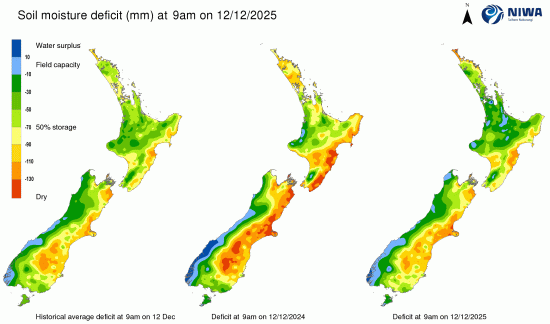Here's our summary of key economic events overnight that affect New Zealand, with news financial markets can now taste a US Fed rate cut.
Today, all eye are on tomorrow's August non-farm payrolls report for the US. Analysts expect them to rise a minor +75,000 but overnight labour market data suggests that may be optimistic.
First, US initial jobless claims rose last week to 197,000 when seasonal factors suggested it should have fallen. There are now more than 1.89 mln people on these benefits, +90,000 more than at the same time last year.
Announced August job cuts came in at 86,000 in August, +40% more than in July. So far this year, companies have announced 892,000 job cuts, the highest year-to-date level since 2020 when 1,963,500 were announced. It is up +66% from the same period last year and is now +17% higher in 2025's eight months than all of the 2024 full calendar year total (of 761,500).
Maintaining the weakening theme, the ADP Employment Report only reported a jobs gain of +54,000 in August, below the expected low +65,000 and well below July's +106,000. In August 2024 this data showed a +180,000 rise.
US labour productivity is improving however, with faster rises in output while labour hours only show a modest increase. Year on year this productivity measure is up +1.1%.
And there was better PMI data out for the US services sector with the widely-watched ISM version expanding slightly more than expected, while the S&P Global/Markit version expanded better even if it was adjusted lower than its earlier 'flash' version. Encouragingly, in both versions new order flows kept these metrics positive and they are at similar levels as a year ago.
US exports were little-changed in July from a year ago, as were the level of imports. That resulted in a goods & services trade deficit almost identical to a year ago. Still, it is now at a four month high. Tariffs have yet to move the trade needle either way (other than collect much more tax from importers).
Financial market reactions to this generally downbeat economic news - was upbeat, on the basis that it makes a Fed rate cut on September 18 (our time) more likely. Equities rose modestly, but bond yields fell quite hard.
Meanwhile Canada also said its exports, imports and trade balance was little-different in July from June, although quite a bit worse than year-ago levels. But the deficit is still quite small (-C$4.9 bln) in relation to the Canadian economy, and their smallest deficit in four months.
In China, they are rolling out a new policy to try and juice up consumption - State-subsidised personal loans. Like the rest of the world, but more so in China, "more debt" is the answer to all economic problems.
With headline inflation at just 1.4%, the Malaysian central bank kept its policy rate unchanged overnight at 2.75%.
EU retail sales slipped in July from June, but remain +2.2% higher than year-ago levels. They report on a volume basis, so these gains are 'real'.
In Australia, household spending is strong and rising. It was up +5.1% in July from the same month a year ago, up +0.5% in July from June which is an even faster rate. That's the third month in a row it has risen and it has risen in nine of the past ten months. In July, this spending was concentrated on services, especially health services, hotel accommodation, air travel, and dining out. But they actually cut back on spending on goods.
Meanwhile, the Australian trade balance turned up after a series of declines. Markets expected a +AU$5 bln surplus in July after a +AU$5.4 bln surplus they got in June. But in fact the surplus came in as +AU$7.4 bln in July, helped by a +3.3% monthly rise in exports and a -1.3% monthly fall in imports. That means the surplus hit a 21 month high.
Global container freight rates were virtually unchanged last week from the prior week, although still down massively from the Red Sea crisi affected year ago levels. Interestingly, outbound rates from China to the US rose a sharpish +8% or more last week, but that was balanced by large falls in the China-to-Europe trade. Bulk cargo rates are still in a narrow band, little-changed from last week.
The UST 10yr yield is now at 4.17%, down another -5 bps from yesterday at this time. The key 2-10 yield curve is now at +58 bps. Their 1-5 curve is now inverted by -11 bps. And their 3 mth-10yr curve is now inverted -8 bps. The China 10 year bond rate is down -3 bps at 1.75%. The Australian 10 year bond yield starts today at 4.36% and down -2 bps from yesterday. The NZ Government 10 year bond rate starts today at just under 4.46%, down -5 bps.
Wall Street is firmer in Thursday trade with the S&P500 up +0.7%. Overnight, European markets were mixed between Frankfurt +0.7% gain and Paris's -0.3% dip. Yesterday, Tokyo closed up +1.5%, Hong Kong closed down -1.1% and Shanghai closed down -1.3%. Singapore ended its session up +0.2%. The ASX200 ended its Thursday up a gull +1.0% and a partial bounceback from Wednesday. The NZX rose +0.4%.
The price of gold will start today at US$3,543/oz, down -US$30 from yesterday.
American oil prices are little-changed at just over US$63.50/bbl with the international Brent price -50 USc softer just on US$67/bbl.
The Kiwi dollar is at just under 58.4 USc and down -40 bps from yesterday. Against the Aussie we are down -20 bps 89.6 AUc. Against the euro we are also down -20 bps at 50.2 euro cents. That all means our TWI-5 starts today at just over 66.1, down -20 bps from yesterday.
The bitcoin price starts today at US$109,830 and down -2.3% from this time yesterday. Volatility over the past 24 hours has been modest at just on +/- 1.4%.
Daily exchange rates
Select chart tabs
The easiest place to stay up with event risk is by following our Economic Calendar here ».
5 Comments
How did Australia manage to get inflation under control without emptying out their hospo and construction industries?
/sarc
They mine real resources.
They didn't go as hard, but as a consequence they need to go longer. Their cash rate is currently 3.60% compared to our 3%.
They did get it right, although you could argue their approach was riskier.
And the majority float their mortgages there leading to much faster behavioural response to changes in interest rates.
How did Australia manage to get inflation under control without emptying out their hospo and construction industries?
Year-on-year growth rates for the M2 supply in Aussie have averaged between 5.0% and 6.3% annually in recent years.
Not too hot, not too cold by Anglosphere standards. You have to work out what inflation is because any number quoted at you by the media is not what inflation is. They will tell you that the CPI is the actual inflation rate.
And people will believe them.
As for hospitality in Aussie, things are dire. Having to sell cups of coffee at $7 to make a cafe business viable suggests inflation is alive and well.
https://www.coffeecommune.com.au/7-for-a-flat-white-cafe-owners-warn-co…



We welcome your comments below. If you are not already registered, please register to comment
Remember we welcome robust, respectful and insightful debate. We don't welcome abusive or defamatory comments and will de-register those repeatedly making such comments. Our current comment policy is here.